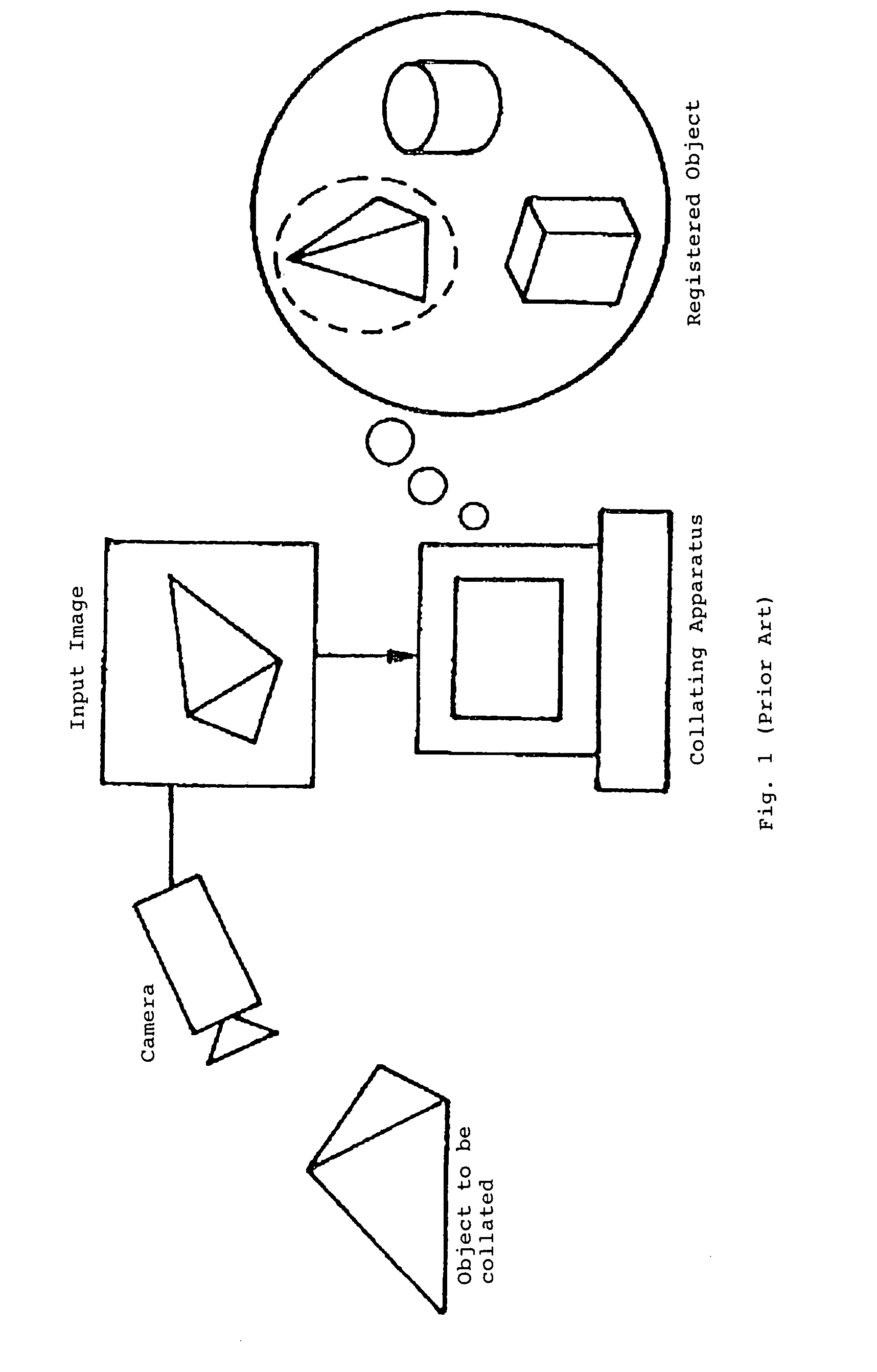Method and apparatus for collating object
- Summary
- Abstract
- Description
- Claims
- Application Information
AI Technical Summary
Benefits of technology
Problems solved by technology
Method used
Image
Examples
first embodiment
[0068]In an object collation method to be described herein, a registration procedure for registering the data of a registered object in a database includes the steps of: storing the three-dimensional shape of the registered object; and storing a texture space which is an image space defined by a texture group indicating the luminance and / or color information of each position of the object surface under various illumination conditions. A collation procedure for collating the input image of an target object with the registered data includes the step of: taking the two-dimensional image of the target object as an input image; generating an illumination fluctuation space which is an image space defined by the image group under the various illumination conditions, at the location and position of the target object in the input image from the three-dimensional and the texture space; and collating the target object on the basis of the distance between the illumination fluctuation space and ...
second embodiment
[0131]The object collation method in the second embodiment of the invention is similar to the method in the first embodiment. The method in the second embodiment is, However, different from the method in the first embodiment in that the registered object measurement step includes the three-dimensional shape measurement step of measuring the three-dimensional shape of the registered object, and the texture photography step of photographing the luminance and the color information of each location of the object surface to generate the texture group by setting the various illumination conditions practically. Further, the method in the second embodiment does not have the texture group generation step but uses the photographed texture group in place of the generation step. Here, the registration procedure is enabled to photograph the illumination fluctuation texture group not by measuring the three-dimensional shape of the registered object and the surface reflectivity to generate the ill...
third embodiment
[0143]The object collation method of the third embodiment is different from that of the first or second embodiment in that the illumination fluctuation space generation step is omitted and replaced by an input texture generation step of converting the input image into the texture by using the three-dimensional shape and the presumed location and position, and in that the distance calculation step calculates the distance between the input texture and the texture space. Here, in place of the generation of the illumination fluctuation space by converting the texture space to adjust the location and position to the input image, the coordinate transformation from the coordinate system of the input image into the coordinate system of the texture space is determined by using the three-dimensional shape and the presumed location and position, to convert the input image into the input texture by the coordinate transformation so that the distance between the input texture and the texture spac...
PUM
 Login to View More
Login to View More Abstract
Description
Claims
Application Information
 Login to View More
Login to View More - R&D
- Intellectual Property
- Life Sciences
- Materials
- Tech Scout
- Unparalleled Data Quality
- Higher Quality Content
- 60% Fewer Hallucinations
Browse by: Latest US Patents, China's latest patents, Technical Efficacy Thesaurus, Application Domain, Technology Topic, Popular Technical Reports.
© 2025 PatSnap. All rights reserved.Legal|Privacy policy|Modern Slavery Act Transparency Statement|Sitemap|About US| Contact US: help@patsnap.com



